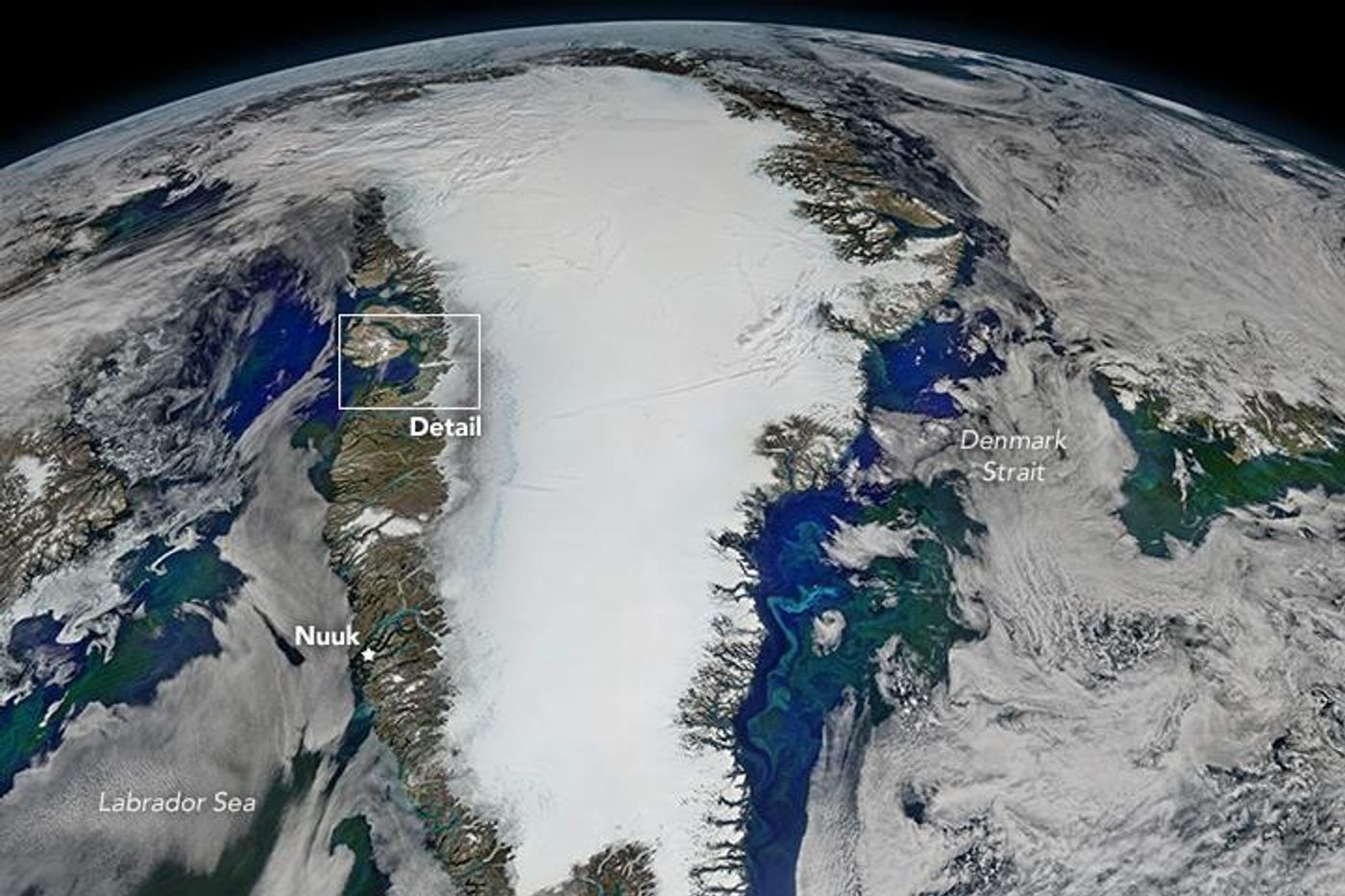Are Greenland's melting glaciers are causing a phytoplankton bloom?
Greenland is experiencing an intense summer bloom of phytoplankton and researchers think that the cause of it is iron. In a new study published in Geophysical Research Letters, a team of scientists hypothesize that the summer bloom of these photosynthesizing marine microorganisms is not due to sunlight and nutrient-rich waters, as is the case with the spring bloom, but instead iron particles from Greenland’s sediments that are drifting out to the Labrador Sea on the meltwater of glaciers.
"The waters around Greenland happen to be one of the rare iron-limited places on Earth," said Kevin Arrigo, a biological oceanographer. "A lot of the photosynthetic machinery of phytoplankton requires iron. If they don't have iron, they can't capture light and make food. All the pieces fit together," he stated. "The fact that when the runoff comes, the bloom starts. The runoff likely carries lots of iron with it."
In a climate changing world, this effect could have a surprising twist: the marine environment could actually benefit from warmer waters which would melt glaciers faster and release iron sooner in the season. "It may be that a much larger fraction of the northern Labrador Sea could become a lot more productive in the summer than it's been," Arrigo said. And because phytoplankton form the base of the food web, they feed essentially all marine species further up the chain; therefore, such productivity could have spiraling effects on the whole ecosystem. Watch the video below to understand more on phytoplankton's role.
The scientists first noticed that the Labrador Sea was experiencing a summer bloom because of the 200,000 square miles of turquoise water. They looked at NASA satellite imagery of the bloom and computer simulations of Greenland's glacier melt and ocean currents and determined that the timing of glacier melt and the bloom lined up.
"The summer bloom develops about a week after the arrival of glacial meltwater in early July and persists until the input of glacial meltwater slows in August or September," said coauthor and Stanford scientist Gert van Dijken.
Nevertheless, more research is needed in order to verify their hypothesis. They are hoping to win a grant to fund a summer research cruise to Greenland where they would gather data on the iron content of the sea before and after the bloom.
Sources: Science Daily, Geophysical Research Letters









